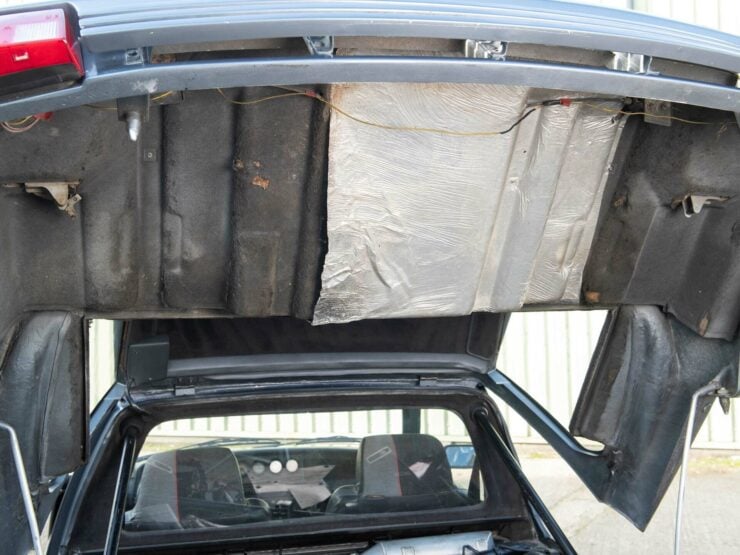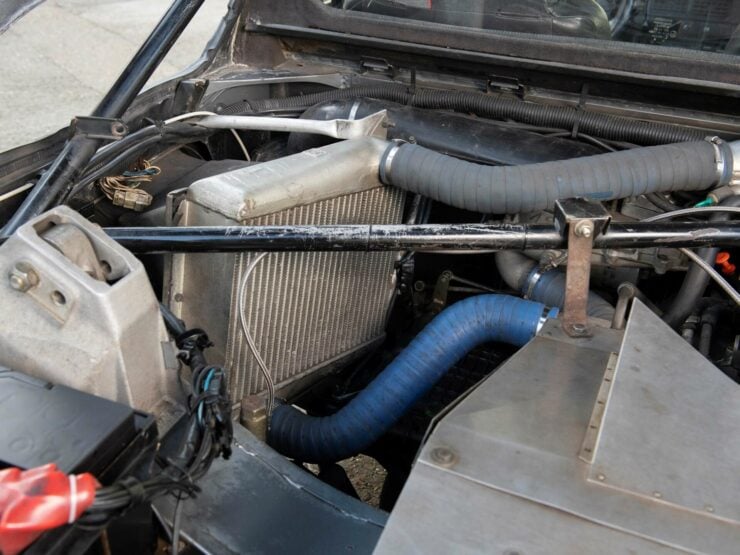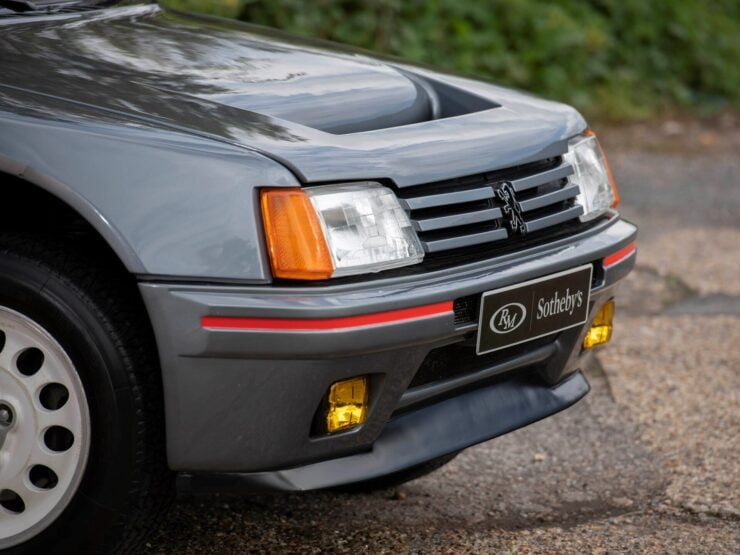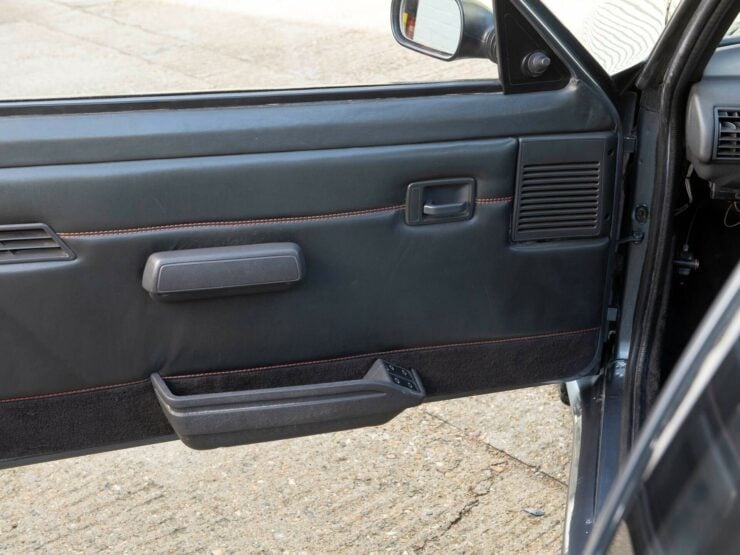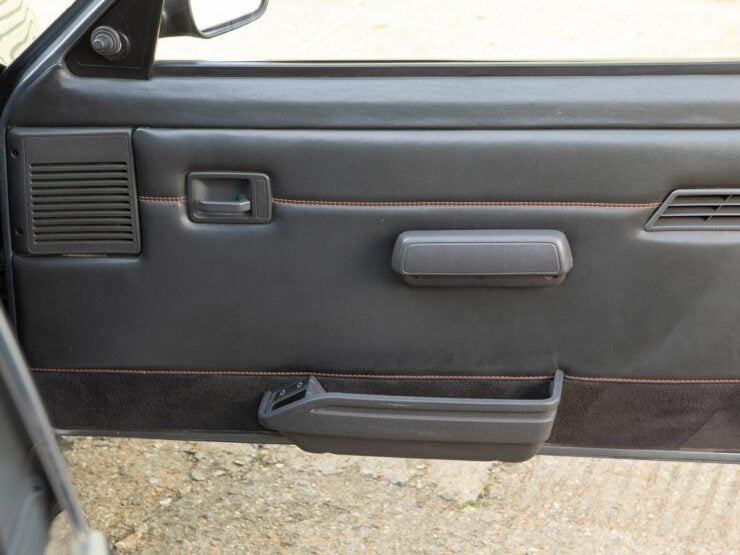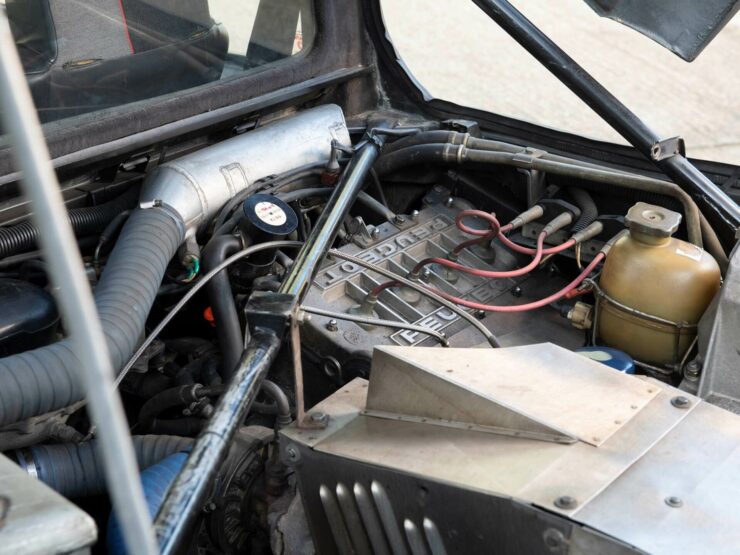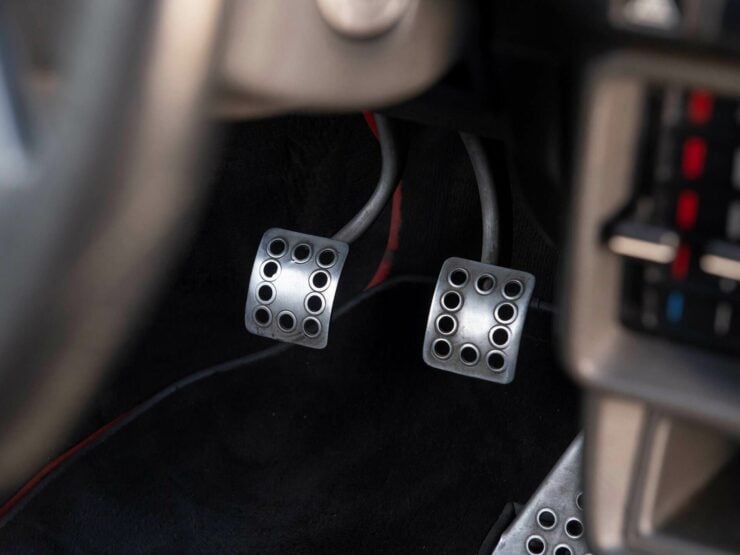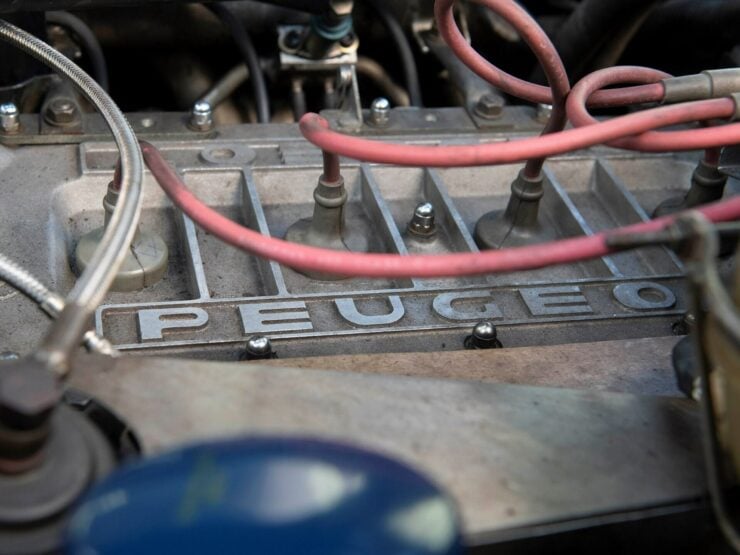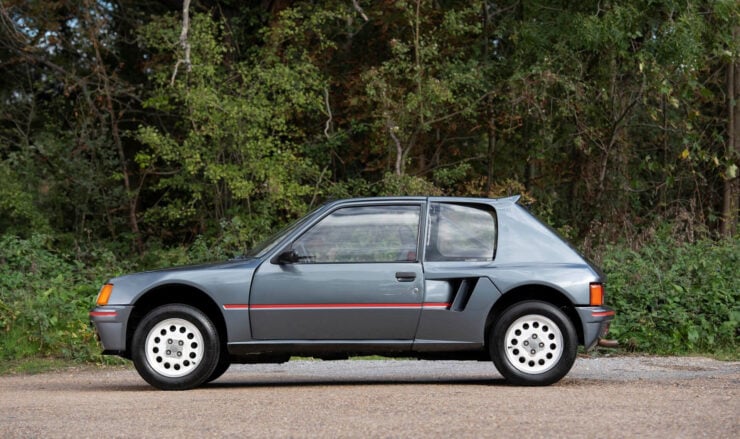The Peugeot 205 Turbo 16, in rally form, was a car that largely dominated the last two years of Group B competition – the Group B era being referred to by some as the “Golden Age of Rallying.”
This was a very well designed and constructed competition car and the engineers had applied great attention to detail to make it as easy to repair as possible even out in the wilds of the rally circuit. The 200 road-going cars made as “homologation specials” to satisfy FIA Group B requirements were de-tuned down to 197 hp but were otherwise much the same as their rally winning counterparts: making them rally cars that you could own and simply enjoy driving.
Fast Facts – The Peugeot 205 Turbo 16
- The Peugeot 205 was specifically created to win Group B World Rally Championship rallies and WRC titles.
- In order to satisfy FIA homologation rules Peugeot had to construct and sell 200 road-going versions of the rally car. These were mechanically the same but with a de-tuned engine to make them pleasant to drive on normal roads. Chassis #188 is one of those 200 cars.
- Peugeot were very successful with the 205 Turbo 16 winning the 1985 and 1986 Group B Constructor’s title.
The Arrival Of The Peugeot 205
The Peugeot 205 was introduced in 1983 as the replacement for the Peugeot 104 and the Talbot Samba – both small, economical little runabouts which, just like the British Mini when it was first introduced back in 1959, did not look like a car that would be developed to become a veritable motor-sport missile and come to dominate rallying for a quite impressive season.
So also the Peugeot 205 with its typical front engine and front wheel drive layout, it didn’t really hint at becoming a car that would not just be a competitive rally car, much but a car that would prove to be a dominant force in the exigencies of the challenging Group B class.
But just as the British Mini was re-envisioned to become a force to be reckoned with, so the diminutive Peugeot 205 would also be re-imagined and re-created to become a car that would take on the best that Audi and Lancia could throw at it, and deliver rally victory after victory.
This recreated car was to be the Peugeot Turbo 16 and it threw off the shackles of its humble front engine, front wheel drive, economical “shopping trolley” beginnings to be transformed into a mid engine four-wheel-drive high performance car which could chirpily take on all-comers.
Peugeot’s engineers were aware of the shortcomings of the Audi quattro, whose engineers had arguably taken the shortest route to create their four-wheel-drive car by leaving the engine in the front and adding on a centre differential essentially taken from the rather agricultural Volkswagen Iltis four-wheel-drive utility vehicle. From the centre differential drive was then engineered to the rear wheels, making the quattro a four-wheel-drive.
The disadvantage of this design was that the car that resulted, the quattro, was rather front heavy and thus more difficult to drive in the high speed unpredictability of rallying.
The Peugeot design team had looked carefully at their opposition at Lancia also, and saw that the mid-engine Lancia 037 designed primarily by Abarth was surprisingly competitive against the Audi quattro. So the Peugeot rally car was to be a mid-engine four-wheel-drive, and over at Lancia their competition department would build their final Group B car, the Lancia Delta S4 also as a mid-engine four-wheel-drive.
The genesis of Peugeot’s Group B rally car began even as the base production car entered production. Peugeot’s competition department engineers had a radical plan for the car and because the FIA Group B homologation rules were rather generous, requiring only 200 road going production cars to be made, it became financially viable to do something outrageously creative with the humble 205.
That outrageous creativity started with cutting off the back half of the car, welding in a transverse firewall with window at the “B” pillar, and then creating a sheet steel and tubular steel rear sub-frame into which would go an engine and transaxle: this work being sub-contracted out to French specialist Heuliez.


Not only was the rear of the car subjected to substantial cutting and welding, but the front also, to take out the original suspension and replace it with upper and lower “A” arms as would be used both front and rear.
The XU8T engine that would be fitted into that new rear end of the 205 was based on the iron block of the diesel 1,775 cc (108.3 cu. in.) XU four cylinder engine. Onto this cast iron block was fitted a specially created double valve (i.e. four valves per cylinder) DOHC cylinder head. Onto this engine was fitted a KKK K26 turbocharger with a Bosch K-Jetronic fuel injection system.
The result of this was an engine for the road going Turbo 16 with a power output of 197 bhp @ 6,750 rpm, and torque of 188 lb/ft @ 4,000 rpm, making for very nice power for such a light 1,145 kg (2,524lb) car. For the competition cars the power output was more than doubled, the Pikes Peak hill-climb car delivering 550 hp on a 3 bar turbocharger boost.
To balance the weight of the car’s engine and the complex transmission system the engine and clutch assembly was offset to the right, and the gearbox to the left.
The front to rear weight balance was almost perfect at 47% front and 53% rear.


The transmission for the 205 Turbo 16 was sourced from the beautiful and highly regarded Citroën SM, which had been fitted with a Maserati engine designed by Giulio Alfieri. This transmission was re-imagined to accommodate the engine in a transverse layout with the four-wheel-drive system.
The centre differential used a Ferguson Formula (FF) Development patented epicyclic center differential with viscous coupling and set up to divide the drive between front and rear to 33% for the front and 67% to the rear wheels. The front and rear differentials were limited slip, as were essential.
The Peugeot 205 Turbo 16 was designed to be as easily repairable as possible. The rear bodywork hinged up to expose as much as possible so that components and assemblies could be rapidly swapped out in the primitive conditions of a rally, similarly the front got the same sort of treatment.
Peugeot’s engineers had a mind for detail in making the car as easy to repair as possible, and this included such details as keeping even the nuts and bolts in common sizes, the four drive shafts were all interchangeable.


In competition the Peugeot 205 Turbo 16 won 16 rounds of the World Rally Championship, six in its first form and ten in Evolution 2 version. These cars won the 1985 and 1986 Constructor’s titles, and carried Timo Salonen and Juha Kankkunen to victory in the 1985 and 1986 Driver’s titles.
They were without doubt the most successful Group B cars in the last two years of Group B competition.
Although under the bodywork the road-going 205 Turbo 16 was near identical with the rally cars outwardly the road going 205 Turbo 16 looked mostly like the other 205 regular production models except that the rear of the car was distinctly different. The wider front and rear track and wider wheels meant that the wheel arches had to also be wider and there were large air intakes sitting behind the rear side windows to draw air into the rear-mid-engine compartment and to the large air-to-air intercooler.
So these cars are subtle, their mild mannered appearance hides what is a bit of a “Q car” (i.e. a car whose outward appearance hides the high performance car under that inconspicuous exterior).
The road going production 205 Turbo 16 could accelerate from standing to 60 mph in 6.6 seconds, whereas the rally version would better than halve that figure. Top speed of the production car was 132 mph and the car could go from standing to 100 mph in 21.3 seconds. Its handling was, of course, impeccable, and very forgiving.
Peugeot 205 Turbo 16 Chassis #188
Only 200 Peugeot 205 Turbo 16 road going production cars were made to satisfy the FIA homologation rules for Group B competition cars. So chassis #188 is the 188th of those 200. This car left the factory on 1st November 1984 painted in the metallic gunmetal grey colour Peugeot called “Winchester Grey”. This was the “de rigeur” colour for the road-going production cars, a buyer could have any colour they wanted as long as it was Winchester Grey with a two tone interior.
Chassis #188 ran up 38,660 kilometres since it left the factory before being purchased by its current owner from Paris Automobiles in July 2014 and has since been stored in a garage and only driven periodically to keep oils and coolant circulating for its best preservation. At time of cataloguing by RM Sotheby’s the car had 40,041 kilometres on the odometer.
Chassis #188 has appeared in car shows in the UK and featured in the “Classic Cars” 2013 calendar and also appeared in the NEC Classic Car Show. You can find the car’s sale page on RM Sotheby’s here.

